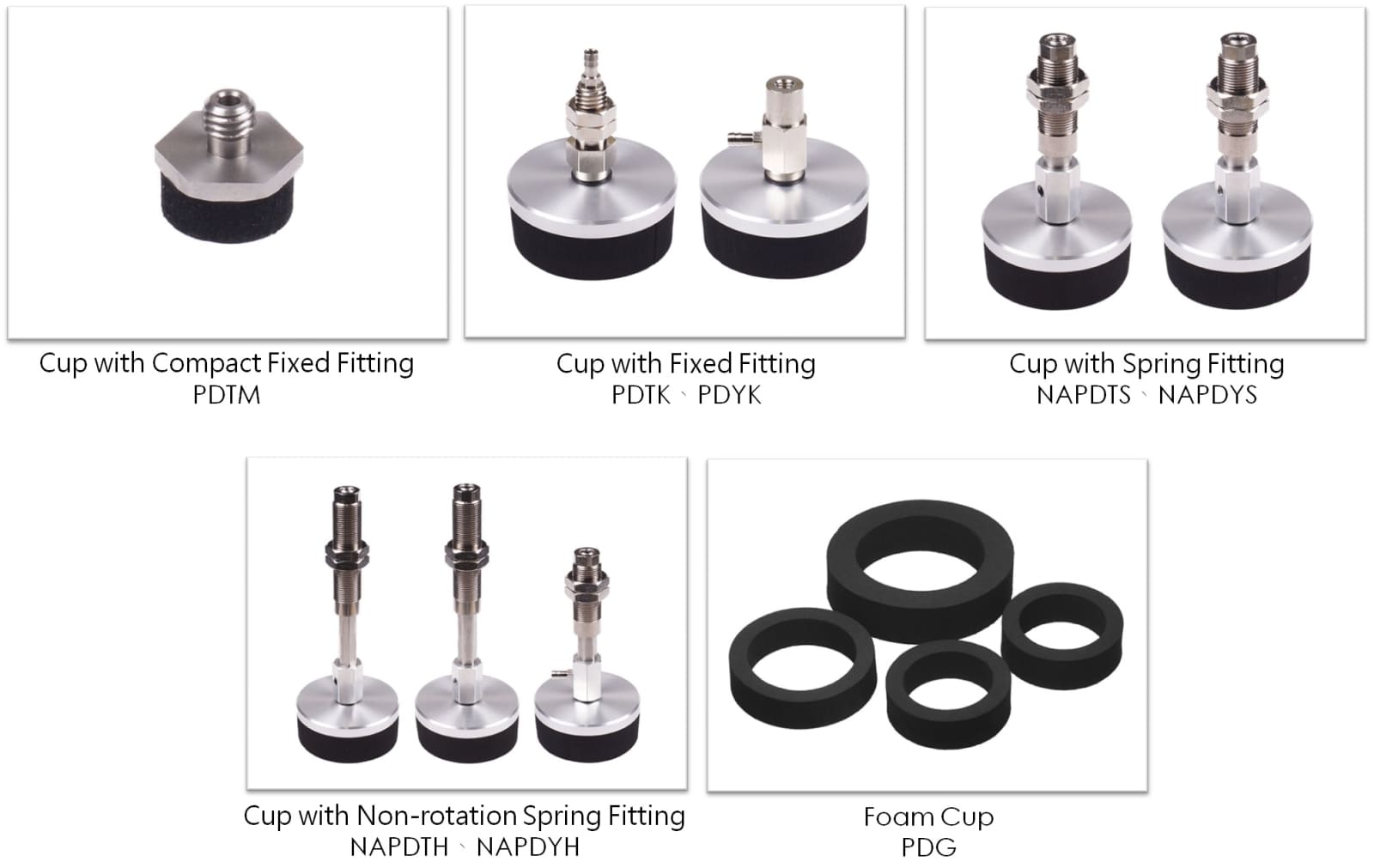

- All Products
- Pneumatic Series
- GENTLE Pneumatic Fittings
- GENTLE Ionizer
- CONVUM Ltd.
- FUJIKURA
- FUJI LATEX Co., Ltd.
- KOGANEI Corporation
- iB series
- Air Cylinders, Hands
- Air Valves
- Air Filters, Regulators, Pressure Gauges
- Flow Rate Sensor Switches, Plachain Ducts, Pressure Switches
- Vacuum Equipment, Pads
- Electric Actuator
- Environmental Hygiene Equipment
- Static Electricity Removal
- Fluororesin Products
- Fixed Discharge Pump
- Medium Control Equipment
- Pulse Blow Series
- NKE Corporation
- TAKEX
- Dispensing Series
- Foam Rubber Construction: Soft, porous foam conforms to surface texture and local height variations for reliable sealing.
- For Rough/Uneven Surfaces: Handles tiles, matte/textured plastics, and aluminum extrusions by compensating for ridges and pits, reducing leakage and slip.
- Wide Size Lineup: ø20 / 30 / 40 / 50 / 60 / 70 / 80 / 100 mm to match contact area and payload.
- Material Options: CRE (conductive chloroprene) for ESD environments; CR (chloroprene/neoprene) for general-purpose, weather-resistant handling.
- Anti-Slip & Tolerance Absorption: Foam distributes pressure and absorbs micro-motion to limit edge lift, local leaks, and dropped parts.
- Applications: Building materials (ceramic tiles, coarse-texture panels), aluminum extrusions and castings, textured plastics, packaging/sorting cells, mixed-model lines with varying shapes and heights.

Q1: What workpieces are PD pads best for?
A: Rough or uneven surfaces such as ceramic tiles, matte/textured plastics, aluminum extrusions, and cast parts.
Q2: What materials are available?
A: CRE (conductive chloroprene) and CR (chloroprene). Use CRE for ESD control; CR for general applications.
Q3: What size options are available?
A: ø20, 30, 40, 50, 60, 70, 80, 100 mm—size by contact area, load, and safety margin.
Q4: How do these differ from silicone or standard cup pads?
A: Foam conforms better to surface texture and height variation, improving sealing and reducing slip where silicone or standard cups may leak.
Q5: Are they suitable for high-throughput automation?
A: Yes. For very short cycle times, validate vacuum build and holding force; upsize or increase pad count if needed.
Q6: Will foam pads mark delicate finishes?
A: Foam spreads contact pressure to reduce marking risk; for sensitive finishes, test on samples and tune vacuum levels.
Q7: Do they work on porous or dusty surfaces?
A: They help, but heavy porosity can still reduce holding force. Clean the surface, increase flow, and consider larger pads.
Q8: What are the care and cleaning recommendations?
A: Wipe dust/debris; avoid prolonged soaking in strong solvents. Replace pads showing hardening, cracks, or declining seal performance.
Q9: How should CRE pads be used in ESD applications?
A: Ensure proper grounding and ESD monitoring to minimize charged pickup and discharges in electronics/optical processes.
Q10: Are PD pads compatible with existing tooling?
A: Usually yes—confirm pad-holder thread/interface and available clearance; pilot on your tool before full rollout.




